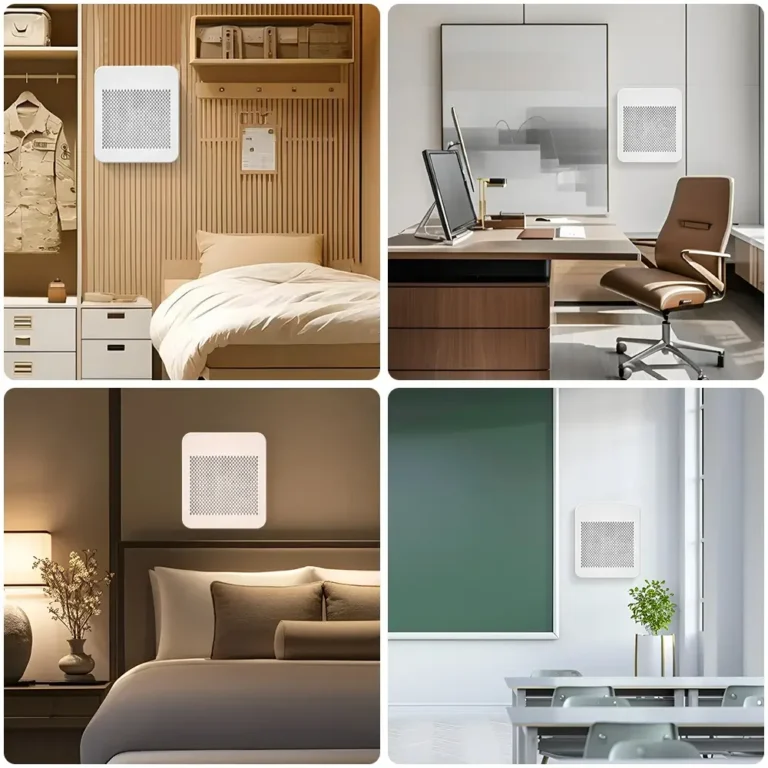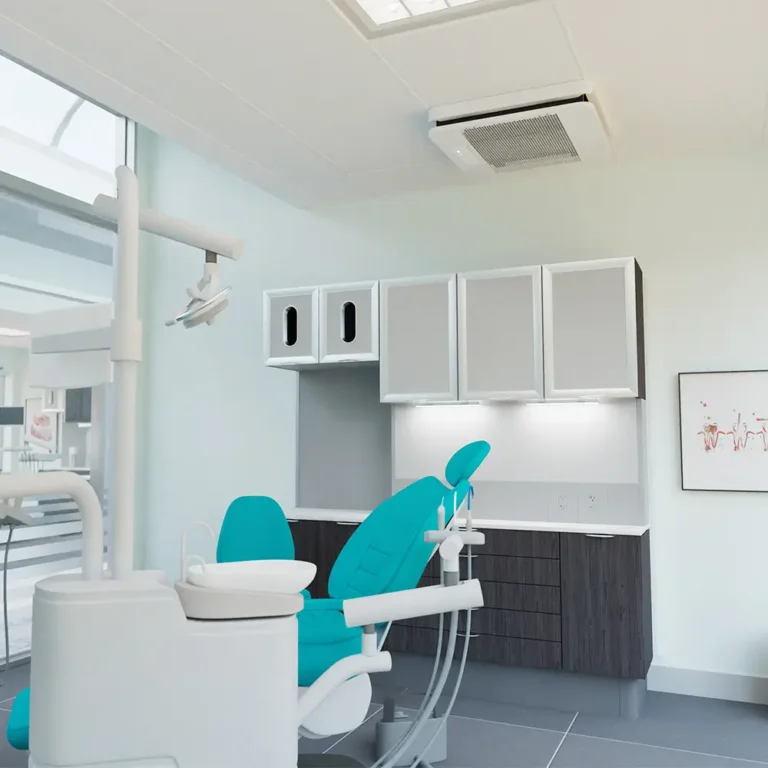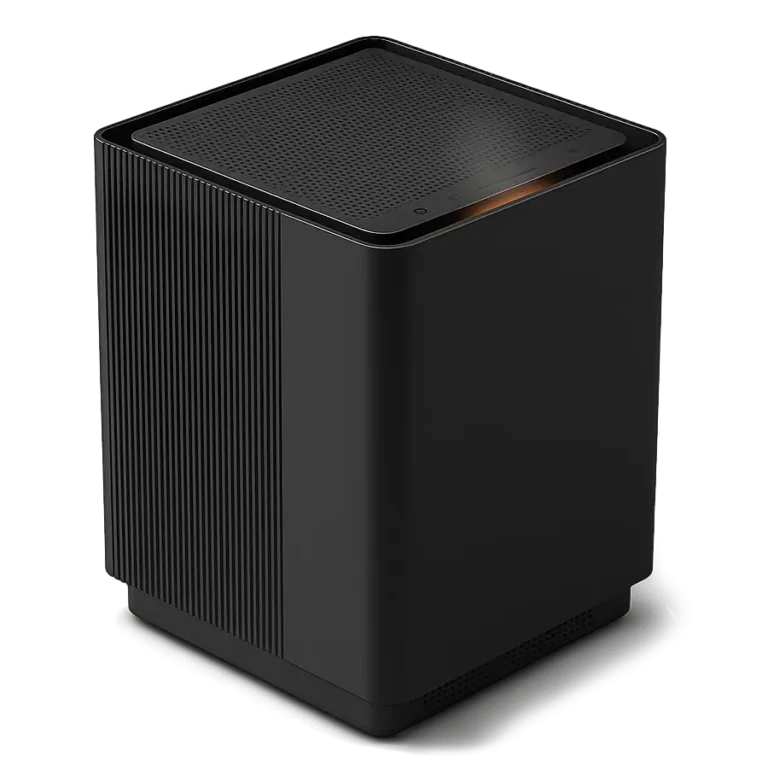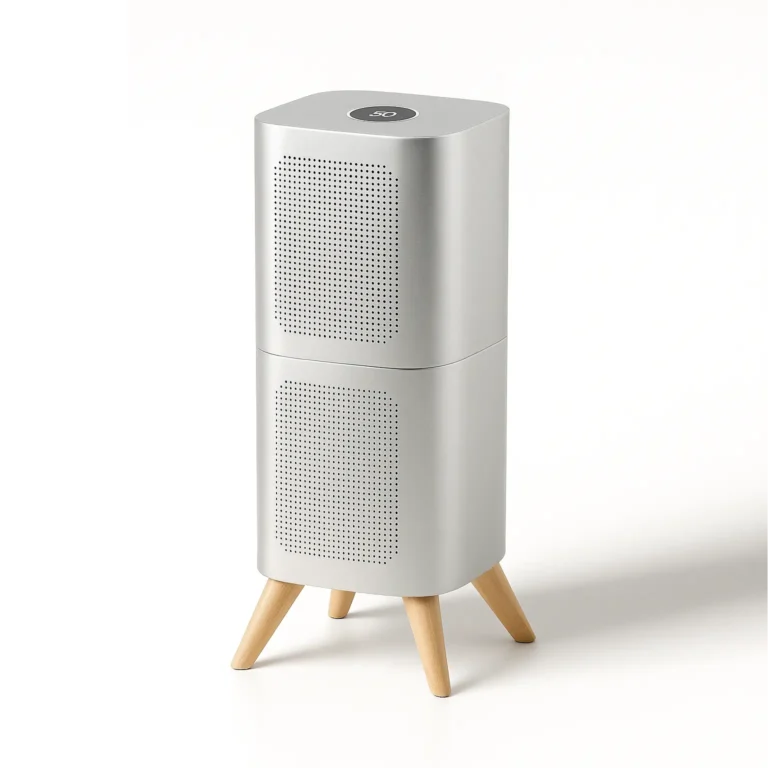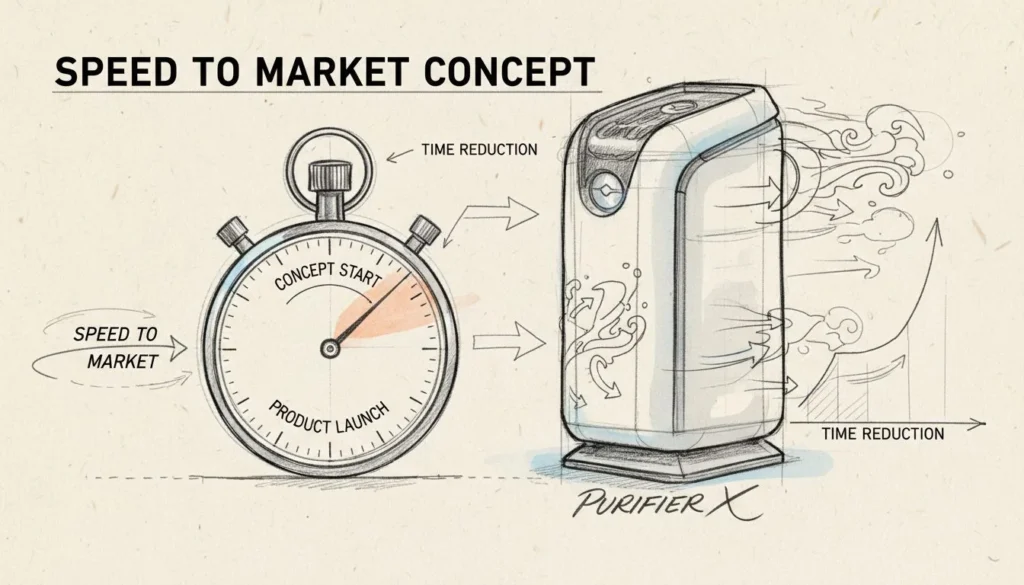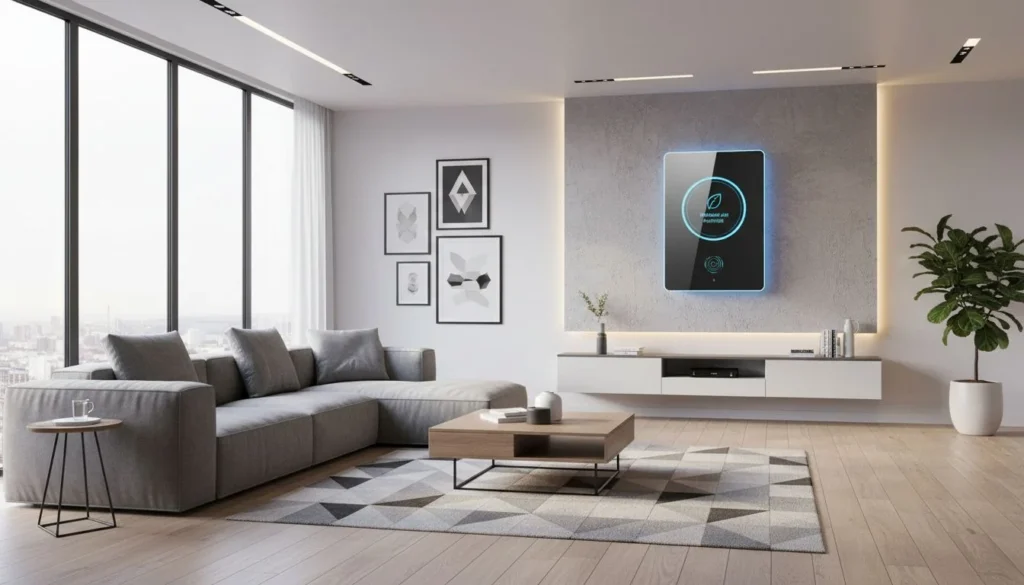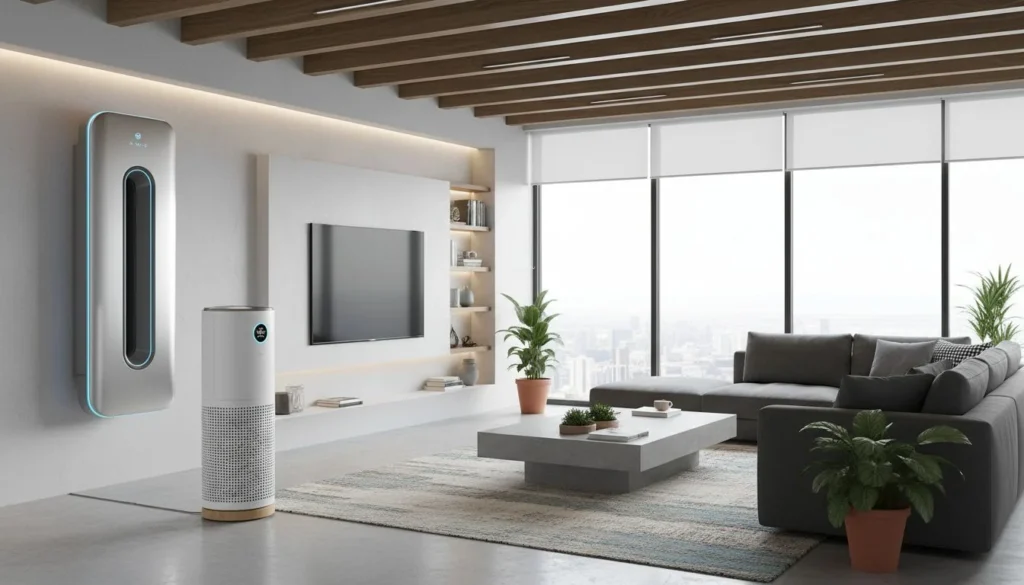L'air que nous respirons est plus qu'une simple nécessité ; c'est un élément crucial de notre bien-être. Avec la prise de conscience mondiale de la qualité de l'air, l'industrie des purificateurs d'air est plus florissante que jamais.
La Chine domine la production de purificateurs d'air grâce à sa solide chaîne d'approvisionnement et à son expertise de longue date en matière de fabrication. Toutefois, la présence de l'Inde se renforce, grâce à de nouvelles usines d'assemblage qui utilisent des matériaux importés de Chine pour répondre à la demande croissante et contourner les droits de douane.
Understanding the dynamics of purificateur d'air production between China and India offers invaluable insights for businesses and consumers alike. Dive deeper to discover the competitive advantages, market strategies, and future prospects shaping this industry's landscape.
La Chine est le premier producteur mondial de purificateurs d'air.Vrai
L'étendue de la chaîne d'approvisionnement et l'expertise de la Chine en matière de fabrication en font un leader.
Qu'est-ce qui fait de la Chine un acteur dominant dans la fabrication de purificateurs d'air ?
La domination de la Chine dans la fabrication de purificateurs d'air est due à l'étendue de sa chaîne d'approvisionnement et à son expertise.
La Chine excelle dans la fabrication de purificateurs d'air grâce à sa chaîne d'approvisionnement complète, à sa technologie de pointe et à sa grande expérience, ce qui en fait la première plaque tournante mondiale.
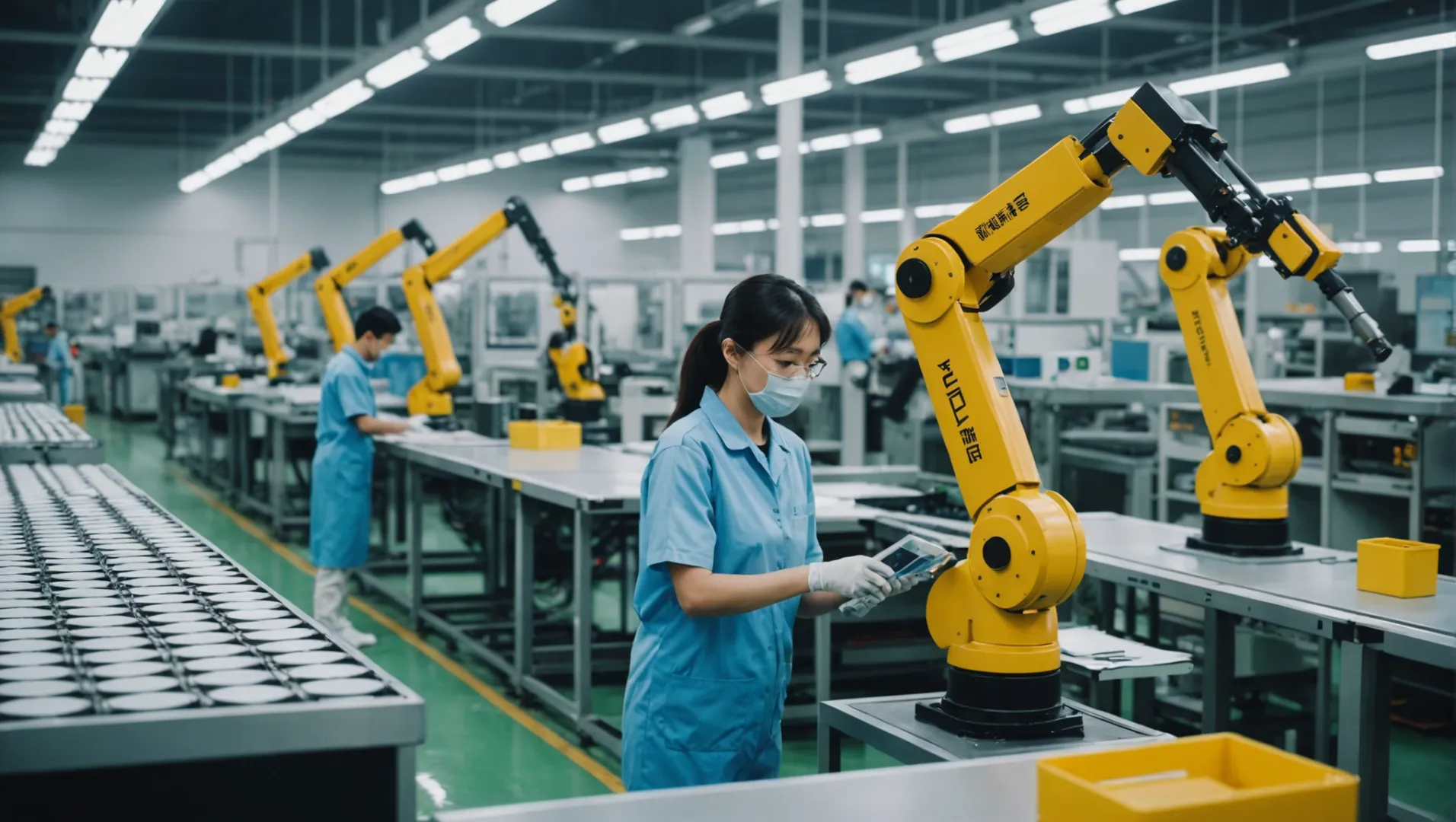
Une vaste infrastructure de la chaîne d'approvisionnement
One of the primary reasons China has secured its place as a leader in air purifier manufacturing is its well-established supply chain infrastructure. Over decades, China has developed a network of suppliers that provide everything from raw materials to cutting-edge technology. This integrated approach allows manufacturers to keep costs low and production efficient. For businesses, this means they can benefit from competitive pricing and rapid production cycles, essential in a fast-paced global market.
Capacités de fabrication avancées
La Chine a investi massivement dans les technologies et les installations de fabrication, garantissant ainsi le respect de normes de production de haute qualité. Le pays est devenu synonyme de innovation et évolutivité1La Chine est le premier producteur mondial de purificateurs d'air, offrant une gamme de produits allant des modèles bon marché aux purificateurs haut de gamme dotés des technologies les plus récentes. Ces capacités n'ont pas seulement répondu aux besoins nationaux, mais ont également permis de répondre aux besoins des marchés mondiaux, renforçant ainsi la position dominante de la Chine.
Positionnement stratégique sur le marché
Le positionnement stratégique des fabricants chinois leur permet de répondre à des demandes variées à l'échelle mondiale. En comprenant les besoins des consommateurs dans les différentes régions, les entreprises chinoises peuvent adapter leurs produits, en offrant des fonctionnalités telles que la filtration HEPA et la connectivité intelligente. Cette capacité d'adaptation est cruciale car les consommateurs sont de plus en plus conscients des problèmes liés à la qualité de l'air.
Une expertise de longue date
L'expérience est importante dans l'industrie manufacturière, et la Chine en possède de nombreuses années. L'expertise du pays se reflète dans sa capacité à innover et à s'adapter rapidement à l'évolution de la dynamique du marché. Cette expertise de longue date signifie que les fabricants chinois peuvent anticiper efficacement les tendances et les besoins du marché. Ils conservent ainsi un avantage concurrentiel sur les acteurs émergents comme l'Inde.
Défis et opportunités
Malgré ces atouts, les fabricants chinois doivent relever des défis tels que les droits de douane internationaux et les préoccupations environnementales. Toutefois, ces défis offrent également des possibilités de diversification dans d'autres régions et sur d'autres marchés.
En résumé, les dominance dans la fabrication de purificateurs d'air2 peut être attribuée à sa chaîne d'approvisionnement complète, à ses technologies de pointe et à des décennies d'expertise qui, ensemble, créent une formidable présence sur le marché mondial.
La chaîne d'approvisionnement chinoise permet de maintenir les coûts des purificateurs d'air à un niveau peu élevé.Vrai
La chaîne d'approvisionnement intégrée de la Chine permet une production rentable.
La Chine ne dispose pas de technologies de fabrication avancées pour les purificateurs.Faux
La Chine a beaucoup investi dans les technologies de fabrication avancées.
Comment évolue le marché indien des purificateurs d'air ?
Le marché indien des purificateurs d'air est sur le point de se transformer, sous l'effet de changements stratégiques.
Le marché indien des purificateurs d'air évolue grâce à des opérations d'assemblage stratégiques utilisant des composants importés, dans le but de surmonter les barrières tarifaires et de répondre aux demandes nationales et internationales.
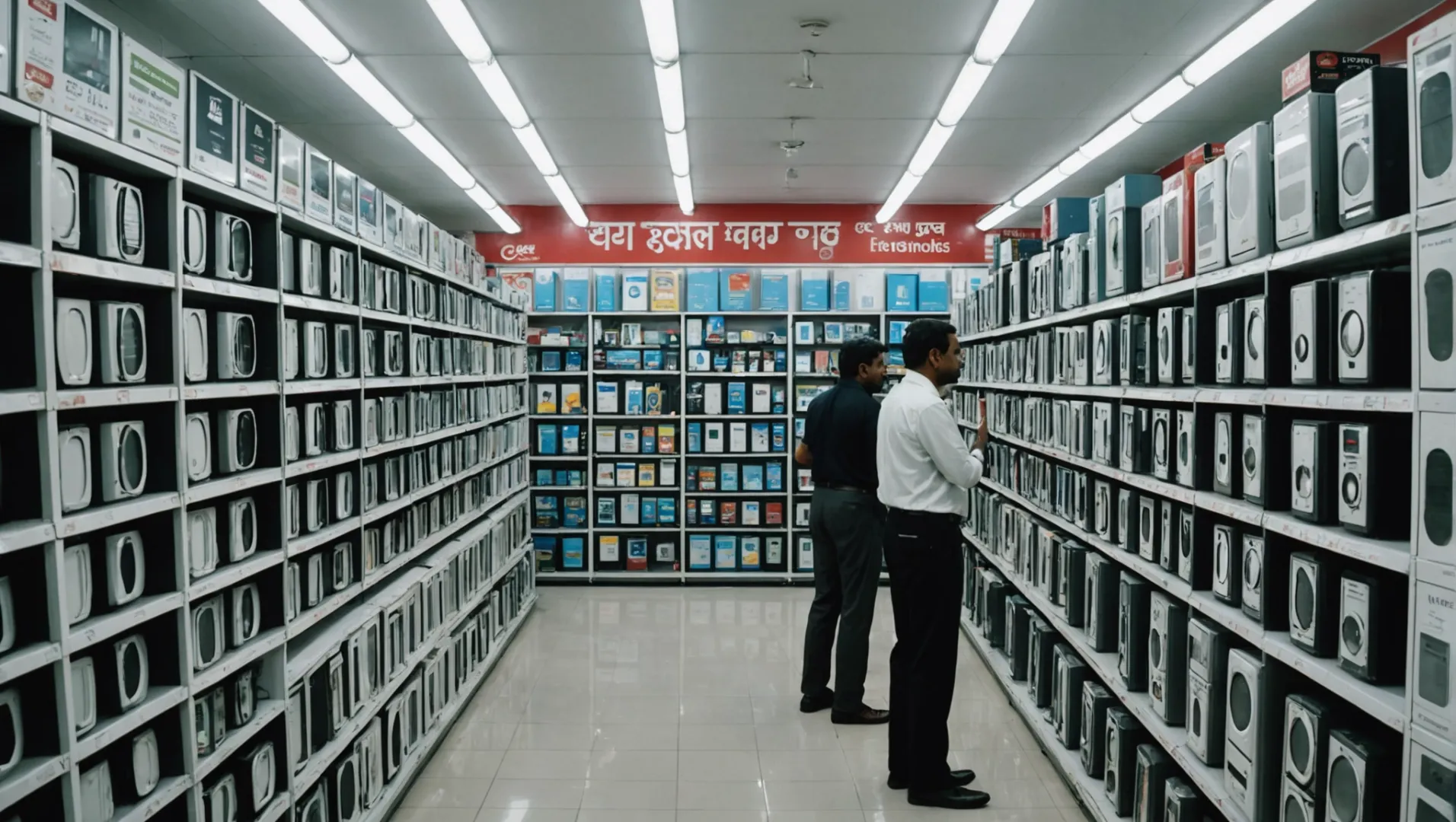
Augmentation de la demande intérieure
L'augmentation des niveaux de pollution de l'air dans les villes indiennes a entraîné une hausse significative de la demande de purificateurs d'air. Les ménages urbains sont de plus en plus nombreux à investir dans ces appareils en raison de la prise de conscience croissante des questions de santé et de bien-être. Cette demande croissante stimule non seulement les ventes, mais elle incite également les fabricants étrangers à explorer les possibilités offertes par l'Inde.
Opérations stratégiques d'assemblage
Pour contourner les droits de douane élevés, plusieurs entreprises adoptent le système Semi-Knocked Down (SKD). Cette approche consiste à importer des composants clés de pays comme la Chine et à les assembler sur place. Cette stratégie permet aux fabricants d'offrir des produits à des prix compétitifs tout en favorisant la création d'emplois locaux et le développement des compétences. De telles opérations ouvrent la voie à une économie de marché plus robuste. écosystème manufacturier3.
Initiatives et soutien des gouvernements
Les initiatives du gouvernement indien telles que "Make in India" et les politiques favorables à l'investissement direct étranger (IDE) encouragent les acteurs mondiaux à établir des bases de production en Inde. Bien que le marché des purificateurs d'air soit actuellement dominé par les importations, ces politiques pourraient conduire à une augmentation de la production locale, réduisant ainsi la dépendance à l'égard des importations chinoises.
Avantage comparatif de l'Inde
Si l'Inde n'est peut-être pas le premier choix pour la délocalisation d'unités de production par rapport à des pays d'Asie du Sud-Est comme le Viêt Nam ou la Thaïlande, elle offre un vaste potentiel de marché intérieur. La présence d'une classe moyenne en plein essor au pouvoir d'achat croissant fait de l'Inde une perspective attrayante pour les investissements futurs.
Impact de la dynamique du commerce international
Les politiques commerciales internationales et les droits de douane influencent considérablement les stratégies de production. Avec les droits de douane sur les importations chinoises dans des marchés comme les États-Unis, la tendance à la diversification des bases de production s'accentue. L'Inde devrait bénéficier de ces changements, bien que progressivement, car les entreprises cherchent à atténuer les risques liés à une dépendance excessive vis-à-vis d'un seul pays.
Perspectives d'avenir
L'évolution du marché indien des purificateurs d'air dépend de la croissance continue de la demande, de l'efficacité de la mise en œuvre des politiques et des progrès en matière d'infrastructures. Avec la prise de conscience environnementale et les progrès technologiques, le potentiel de l'Inde en tant qu'acteur clé de l'industrie mondiale des purificateurs d'air pourrait connaître des avancées remarquables.
Le marché indien des purificateurs d'air est tiré par les activités de SKD.Vrai
Les opérations de SKD contribuent à réduire les droits de douane et à stimuler la fabrication locale.
Le marché indien des purificateurs d'air n'est pas affecté par les politiques gouvernementales.Faux
Les initiatives gouvernementales telles que "Make in India" encouragent la production locale.
Quel rôle les tarifs douaniers jouent-ils dans les stratégies de production ?
À l'ère de la mondialisation des échanges, les droits de douane influencent considérablement le lieu et le mode de fabrication des produits.
Les droits de douane obligent les fabricants à revoir leurs stratégies de production, ce qui conduit souvent à la délocalisation d'usines d'assemblage vers des régions où les droits de douane sont moins élevés. Cette réorientation permet de réduire les coûts et de maintenir des prix compétitifs sur les marchés cibles.
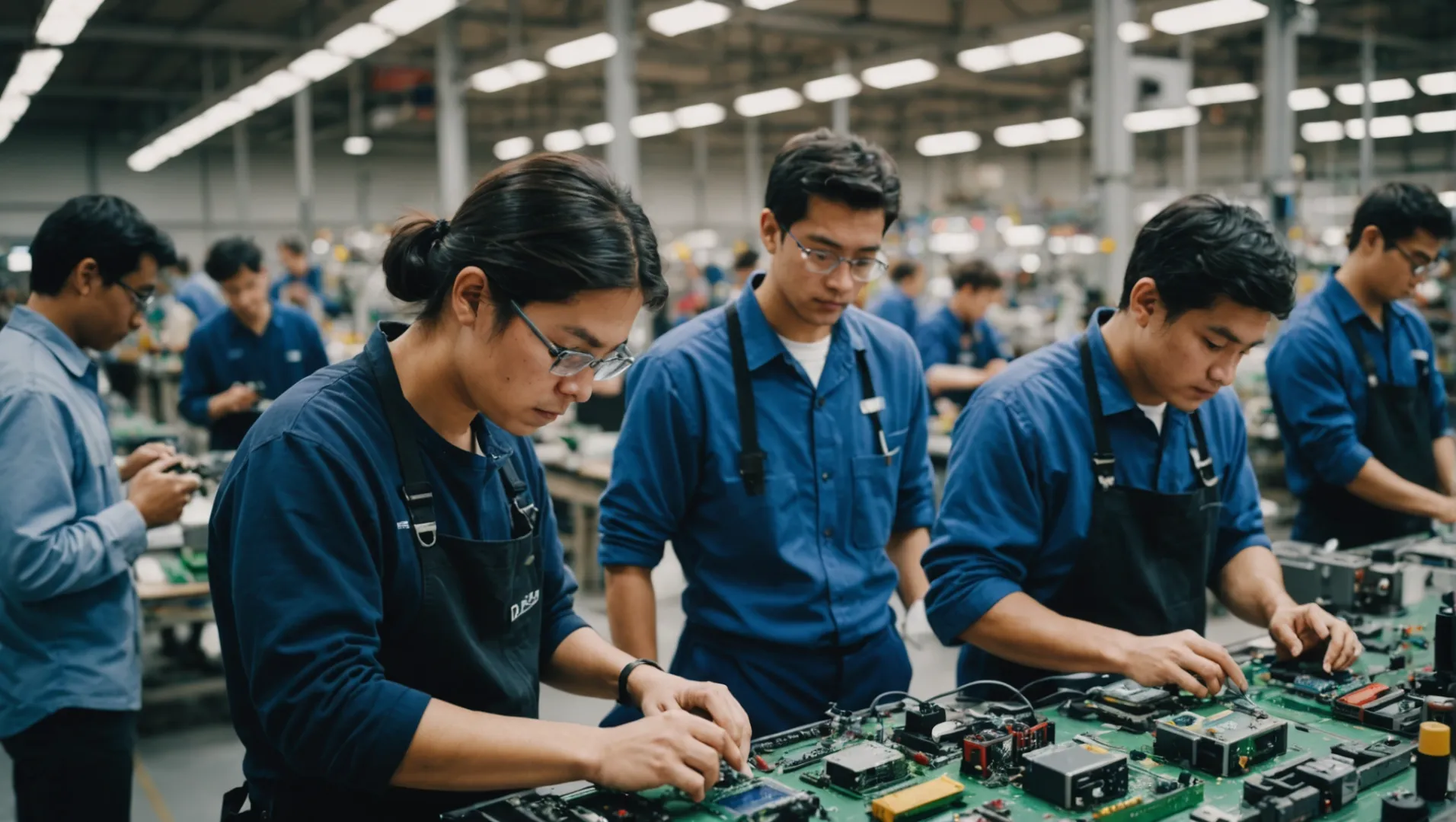
L'impact des droits de douane sur l'industrie manufacturière mondiale
Les tarifs douaniers jouent un rôle crucial dans le paysage manufacturier mondial en influençant le choix des entreprises pour la production de leurs biens. Par exemple, les droits de douane élevés imposés par les États-Unis sur les produits chinois ont incité les fabricants à rechercher des alternatives en dehors de la Chine afin de maintenir leur rentabilité et d'éviter les hausses de prix.
Relocalisation et assemblage stratégiques
Une stratégie courante consiste à délocaliser les opérations d'assemblage dans des pays où les conditions commerciales sont plus favorables. Dans l'industrie des purificateurs d'air, les entreprises peuvent opter pour la délocalisation des activités d'assemblage dans des pays où les conditions commerciales sont plus favorables. semi-abattu (SKD) l'assemblée4 en Inde. Cette approche consiste à importer des composants de Chine et à les assembler en Inde, ce qui permet de réduire les droits d'importation et d'améliorer le rapport coût-efficacité.
Analyse comparative : Inde vs. Asie du Sud-Est
Si l'Inde devient une option viable pour les SKD en raison de ses structures tarifaires, d'autres pays d'Asie du Sud-Est comme le Viêt Nam, la Malaisie et la Thaïlande restent attractifs en raison de leurs infrastructures établies et de leur proximité avec la Chine.
| Pays | Avantages | Défis |
|---|---|---|
| Inde | Tarifs favorables, potentiel de marché croissant | Demande actuelle limitée sur le marché |
| Vietnam | Logistique établie, plus proche de la Chine | Marché émergent, infrastructures encore en développement |
| Malaisie | Accords commerciaux solides, main-d'œuvre qualifiée | Un marché intérieur plus petit que les autres |
| Thaïlande | Secteur manufacturier diversifié | Dynamique régionale concurrentielle |
Implications à long terme pour les stratégies de production
Les droits de douane continuant à fluctuer en fonction des politiques commerciales internationales, les fabricants doivent rester flexibles. Les stratégies à long terme peuvent consister à diversifier les sites de production et à investir dans des pays dont les politiques économiques et les accords commerciaux sont stables.
Les entreprises qui peuvent naviguer efficacement dans ces environnements commerciaux complexes conserveront leur avantage concurrentiel sur le marché mondial. La compréhension de cette dynamique est cruciale pour les parties prenantes qui cherchent à optimiser leurs stratégies de production en réponse à l'évolution du paysage tarifaire.
Les tarifs douaniers entraînent souvent la délocalisation des usines d'assemblage.Vrai
Les droits de douane incitent les fabricants à délocaliser leurs activités dans des régions où les droits de douane sont moins élevés.
L'Inde est moins favorable que le Viêt Nam pour l'assemblage de SKD.Faux
L'Inde offre des tarifs avantageux, ce qui en fait un lieu d'implantation viable pour les SKD.
Existe-t-il des alternatives viables aux purificateurs d'air fabriqués en Chine ?
With concerns over supply chains, many are seeking alternatives to Chinese-made air purifiers.
Oui, il existe des alternatives viables aux purificateurs d'air fabriqués en Chine. Des marques de pays comme les États-Unis, le Japon, la Corée du Sud et les marchés émergents de l'Inde proposent des produits compétitifs. Ces alternatives se concentrent souvent sur les technologies innovantes, le développement durable et les besoins du marché local, attirant ainsi les consommateurs qui privilégient la qualité et l'approvisionnement éthique.
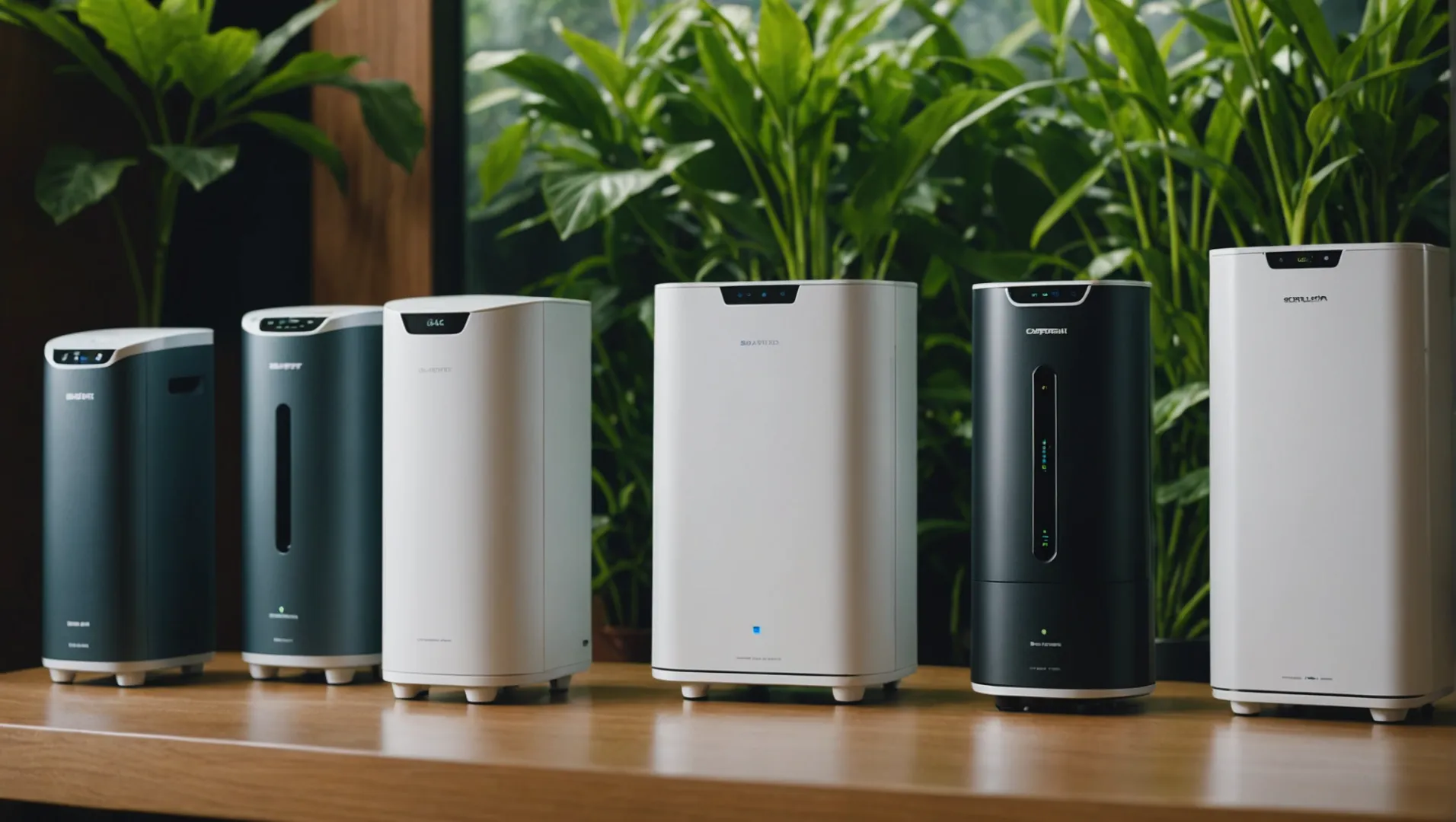
Explorer les marques mondiales de purificateurs d'air
À mesure que le marché des purificateurs d'air se développe, plusieurs pays sont apparus comme des alternatives potentielles aux prouesses manufacturières de la Chine. Les États-Unis5 et Japon6 sont réputés pour leurs normes de production de haute qualité et leur technologie innovante. Ces pays privilégient les méthodes de filtration avancées et les fonctions intelligentes qui s'adressent aux consommateurs férus de technologie.
Le rôle de l'innovation sud-coréenne
La Corée du Sud a fait des progrès considérables dans le secteur de l'électroménager. Des marques comme Samsung7 et LG8 proposent des purificateurs d'air qui intègrent IdO (Internet des objets), permettant aux utilisateurs de surveiller la qualité de l'air à distance via un smartphone. De telles innovations séduisent un marché en pleine croissance de consommateurs natifs du monde numérique qui recherchent une intégration transparente dans leur maison intelligente.
Le rôle émergent du marché indien
Alors que l'Inde est encore en train de développer sa production nationale de purificateurs d'air, elle constitue un centre d'assemblage prometteur pour les marques internationales qui cherchent à tirer parti de la baisse des tarifs douaniers et des coûts de production. La stratégie consistant à importer des composants de Chine pour les assembler en Inde, connue sous le nom de SKD (Semi Knocked Down), permet une distribution rentable sur le marché américain grâce à la réduction des droits d'importation. À mesure que cette tendance se développe, les consommateurs peuvent s'attendre à des options plus abordables avec des performances comparables à celles des modèles chinois.
Durabilité et production éthique
Les consommateurs accordent de plus en plus d'importance au développement durable, ce qui stimule la demande de purificateurs d'air respectueux de l'environnement et produits dans le respect de l'éthique. Les entreprises européennes sont à la pointe de ce mouvement en se concentrant sur les matériaux durables et les conceptions économes en énergie. Ces pratiques séduisent non seulement les consommateurs soucieux de l'environnement, mais s'alignent également sur les objectifs de développement durable à l'échelle mondiale.
Qualité et coût : Que doivent prendre en compte les consommateurs ?
Lors de l'évaluation des alternatives, les consommateurs doivent prendre en compte des facteurs tels que la longévité du produit, l'efficacité énergétique, les coûts de remplacement des filtres et le service après-vente. Bien que les marques non chinoises soient parfois plus chères, elles offrent souvent des garanties et un service après-vente de qualité supérieure.
En résumé, si la Chine reste une force dominante dans la fabrication des purificateurs d'air, des alternatives viables sont disponibles dans le monde entier. Ces alternatives répondent aux différentes préférences des consommateurs, qu'il s'agisse de technologies de pointe ou de pratiques durables.
Les purificateurs d'air américains sont connus pour leurs fonctions intelligentes.Vrai
Les marques américaines se concentrent sur la filtration avancée et la technologie intelligente.
L'Inde exporte des purificateurs d'air entièrement assemblés dans le monde entier.Faux
L'Inde assemble des purificateurs d'air en utilisant la méthode SKD pour la distribution locale.
Conclusion
While China remains a powerhouse in air purifier production, India's potential is burgeoning. As market demands and tariffs evolve, keeping an eye on these shifts can inform smarter purchasing decisions.
-
Découvrez les avancées de la Chine en matière de technologie de fabrication et d'avantages liés à l'évolutivité.. : La Chine a atteint une nouvelle étape de son développement économique, avec des capacités d'innovation beaucoup plus importantes dans ses universités et ses entreprises nationales. ↩
-
Comprendre pourquoi la Chine est en tête de la production mondiale de purificateurs d'air : La Chine est actuellement en tête de la production de purificateurs d'air, grâce à sa rentabilité, sa capacité de production et ses activités de recherche et de développement ... ↩
-
Découvrez comment les opérations SKD améliorent la rentabilité et l'emploi local.. : Le SKD est une solution intermédiaire entre le CKD et le CBU et il nécessite un peu moins de travail que le CKD, c'est-à-dire que les essais et les étapes de contrôle de la qualité sont réduits. ↩
-
Découvrez comment l'assemblage SKD permet de réduire les coûts de production : Un véhicule en état de marche est complet, construit dans l'usine de fabrication du pays d'origine, avant d'être transporté dans un atelier où il est démonté ou ... ↩
-
Découvrez les principales marques américaines connues pour leur technologie innovante de purification de l'air.. : Au cours de mes recherches, j'ai constaté à plusieurs reprises que Molekule, Blueair et Levoit étaient recommandés comme les meilleures options de leur catégorie. J'ai donc essayé les trois. J'ai donc essayé les trois. Ci-dessous, je vous donne les détails sur ... ↩
-
Découvrez comment les marques japonaises excellent dans l'innovation en matière de purification de l'air.. : Purificateur d'air Sharp FU-L30-W Plasma Cluster 7000 - Modèle le plus récent - Virus Pollen 10 Tatami Area - Blanc. Prix régulier : $340.00. Prix de vente : $340.00 Vente. ↩
-
Découvrez les fonctions intelligentes de Samsung dans leurs purificateurs d'air... : La plupart de nos purificateurs d'air contiennent des systèmes de filtration HEPA innovants qui éliminent 99,97% de poussières ultrafines de 0,3㎛, empêchent la propagation des bactéries capturées, ... ↩
-
Comprendre l'approche de LG pour intégrer l'IdO dans les purificateurs d'air... : Fonctionnement silencieux. Avec des niveaux de bruit aussi bas que 23dB, le Smart Inverter de LG purifie l'air tout en gardant votre espace paisible et silencieux. Design adapté aux enfants ... ↩


